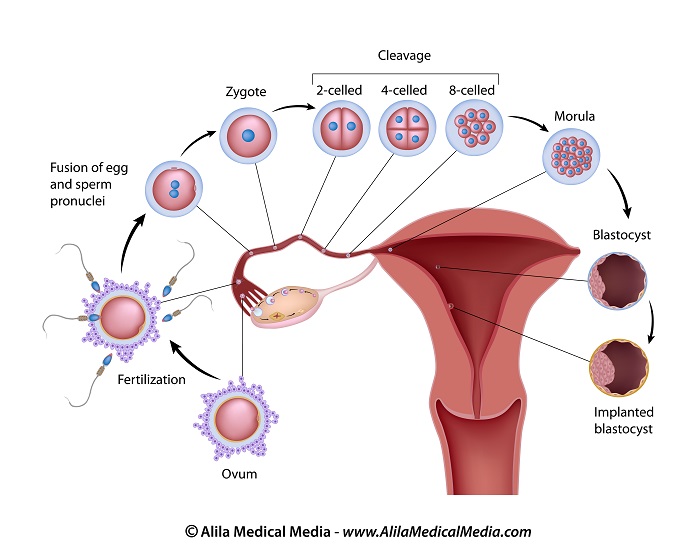Human Embryonic Development Explained Clearly
From Fertilization to Gastrulation - Basic Embryology explained in 5 min - It's mind-boggling how simple it is!
This lesson includes an animated video lecture, downloadable images, quiz questions and a PDF
Human prenatal development can be divided into 3 stages:
- pre-embryonic: first 2 weeks – conceptus
- embryonic (weeks 3 to 8) – embryo
- fetal development (week 9 to birth) – fetus
(age is counted from fertilization/conception)
Pre-embryonic development:
Fertilization usually occurs in the ampulla of fallopian tube. The fertilized egg, referred to as the conceptus at this stage, immediately travels toward the uterus. During the journey, it undergoes several mitotic cell divisions, producing daughter cells, called blastomeres. This process is known as cleavage, because the cells divide without growing in volume. After about 3 days, the conceptus arrives in the uterus: it now contains about 16 cells and is called a morula. Cells of the morula are totipotent, they are capable of differentiating into all cell types, both embryonic and extra-embryonic...
After about 3 days, the conceptus arrives in the uterus: it now contains about 16 cells and is called a morula. Cells of the morula are totipotent, they are capable of differentiating into all cell types, both embryonic and extra-embryonic...
Subscribe to our "Anatomy and Physiology" course below to continue!
This content is available within the following courses:

Anatomy and Physiology: More than 80 animations, plus downloadable PDFs, downloadable images, and quizzes.

Anatomy and Physiology: More than 80 animations, plus downloadable PDFs, downloadable images, and quizzes.